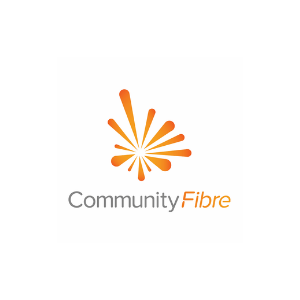Fibre Postcode Checker
Compare Superfast Broadband In Your Area Now
Filter Your Results

Mbps *Avg. Speed
Month Contract
Downloads
Calls
Install
Per Month

Mbps *Avg. Speed
Month Contract
Downloads
Calls
Install
Per Month

Mbps *Avg. Speed
Month Contract
Downloads
Calls
Install
Per Month

Mbps *Avg. Speed
Month Contract
Downloads
Calls
Install
Per Month

Mbps *Avg. Speed
Month Contract
Downloads
Calls
Install
Per Month

Mbps *Avg. Speed
Month Contract
Downloads
Calls
Install
Per Month

Mbps *Avg. Speed
Month Contract
Downloads
Calls
Install
Per Month

Mbps *Avg. Speed
Month Contract
Downloads
Calls
Install
Per Month

Mbps *Avg. Speed
Month Contract
Downloads
Calls
Install
Per Month

Mbps *Avg. Speed
Month Contract
Downloads
Calls
Install
Per Month
Get Alerted When Faster Speeds Go Live In Your Area
Whether you are thinking of switching to a faster package, searching for a cheaper deal, or taking out a broadband package for the first time, there are many providers to choose from. To simplify the process, a quick postcode check will narrow down your options to services which are available in your exact location.
Compare superfast broadband in your area
If you are looking to find out whether superfast fibre broadband is available in your postcode area, you have come to the right place. This useful guide will tell you exactly how to find the fastest fibre and how to check which providers operate in your area so that you can compare packages to find the best deal.
For those looking for high-speed internet access, fibre broadband is essential. The connection is provided via fibre optic cables, which allow the data to literally travel at the speed of light across great distances.
There are two types of fibre connections available, superfast fibre broadband, otherwise known as Fibre To The Cabinet (FTTC), and Fibre To The Premises (FTTP), which delivers ultrafast broadband connections.
FTTC is not as fast as FTTP connections, as the fibre cables only run as far as your local street cabinet. The connection is then delivered to your home via your standard copper telephone cable. Although there is a compromise in speeds, it is much faster than ADSL connections and 95% of postcodes across the UK are able to access an FTTC connection.
In contrast, an FTTP connection uses fibre cables for the full network, with fibre optic cables running from the exchange to your home. This is the fastest possible connection, however, at the moment, it is only available to roughly 18% of UK postcodes.
How to use your postcode to find out the fastest fibre available
Fibre postcode checkers are designed to offer you a fast and easy way to check which speeds and connection types are available at your address. The majority of fibre providers will offer these tools on their websites and you will be provided with an instant result. Simply enter your postcode and select your house name or number from the list. To improve accuracy, it is useful to also enter your landline telephone number and the name of your current broadband provider.
The availability checker will show you which speeds are available specifically to your home. There is some variation across the UK, with houses in more remote locations often receiving slower speeds due to their distance from the exchange. However, fibre availability is increasing, and it is likely that you will have multiple packages available in your area to compare. In general, the closer your home is to the cabinet, the faster your fibre connection will be.
How to use your postcode to check which providers can offer you fibre broadband
The supplier’s postcode availability checkers are designed to check which services are available, so the fibre speeds will be dependant on your location. If you are looking to compare multiple providers, there are also quick availability checkers which use your postcode to compare the available options.
These comparison services work in exactly the same way, simply enter your postcode and landline number and you will be presented with a list of fibre providers offering connections to your exact address. The various deals can then be compared so that you can find the best price for the fibre speeds you need across the market.
These services are so quick and easy to use that it is worth checking regularly to see if your current package is providing the best speeds at the best possible price. If there is a cheaper service available which still meets your connection requirements, switching is very easy. The new provider will handle the whole process and you will soon be able to benefit from lower costs and potentially faster fibre speeds.
My postcode can’t get fibre, what can I do?
Although superfast fibre broadband is available to 95% of postcodes across the UK, there are still some areas which are not yet able to access this service. If a postcode checker has shown that you are not yet eligible for fibre broadband, you may still be able to sign up to an Asymmetric Digital Subscriber Line (ADSL) broadband connection.
ADSL broadband will offer slower speeds than a fibre connection, however, it is the most widely available form of broadband. The service uses the traditional copper phone lines which are capable of reaching 99% of UK postcodes. In most cases, an ADSL connection will be suitable for standard domestic use, however, at peak times and with multiple users, the connection may struggle.
If you are located in an area which is not currently able to offer fibre broadband, it is worth checking the Openreach website map. Simply enter your postcode and the map will let you know whether the largest network operator is installing in your area soon. In addition, your local council will be able to advise whether there are any immediate plans for fibre optic cables to be installed in your postcode.
If there are no plans to install fibre to your postcode, you can register your interest with Openreach and the smaller network operators such as Hyperoptic, CityFibre and Gigaclear. To find out more about checking fibre availability in your area or to compare providers and internet speeds, please contact our team today.
